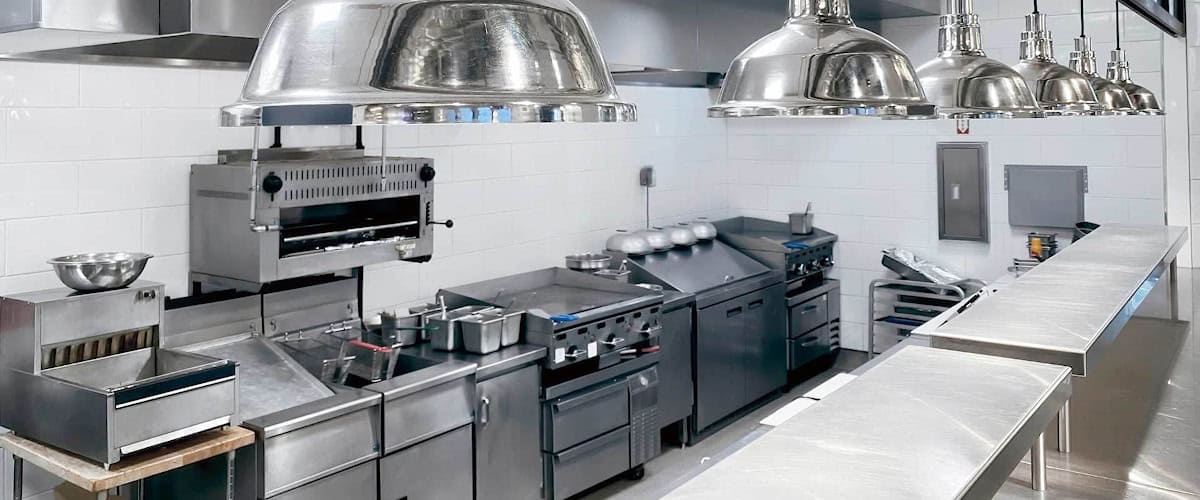As more brands introduce virtual concepts and expand their reach, examples of strategies that work are becoming more clear. From menu and brand development to site selection and staffing, this guide will walk you through an overview of all the things to consider when launching a virtual concept.
Restaurants have been making adjustments to accommodate a shift toward off-premise consumption, even making adjustments to physical locations. Ghost kitchens were establishing a presence before the pandemic and have emerged as a source of sales growth for many restaurant chains. Brinker, for example, reported positive sales growth in April and attributed higher volumes generated by its virtual brands. The virtual brand, It’s Just Wings, has grown to over 1000 concepts.
Not only are virtual restaurants boosting sales growth, but operating them is a great way to experiment and fine-tune concepts before opening physical locations. Dickey’s is turning its delivery-only Wing Boss into a physical unit. After operating virtually for six months, the brand says a big advantage to going brick-and-mortar is enriching the guest experience.
Thinking about starting or already operating a virtual restaurant?
Consumer demand for more, convenient options has led to the emergence of ghost kitchens. Coronavirus accelerated this; with government-mandated dining restrictions, many operators found their units with unused kitchen space and less front-of-house and back-of-house staff. Operating under a delivery-only model not only has lower overhead and quicker startup times than a traditional brick-and-mortar location, but it also typically requires fewer staff members. Thus, operating virtual restaurants is also a means to help ease some of the consequences of the staffing crisis.
The Emergence of Ghost Kitchens & Their Rising Impact gives an overview of all the elements to consider when opening a ghost kitchen. Download the free report for an overview of the shift toward off-premise sales and how they have progressed over the last 18 months.
Food Supply Chain Issues and Operational Challenges
Download The Emergence of Ghost Kitchens & Their Rising Impact for some of the challenges ghost kitchens face, including food supply chain issues that affect the entire industry. Running virtual restaurants does give operators some flexibility when it is difficult to find certain ingredients due to food supply chain shortages.
Site Selection, Kitchen Design & Menu Development
Where to operate, how to design the kitchen, and what to put on your menu all go hand in hand. The Emergence of Ghost Kitchens illustrates the possibilities with some examples from established operators on how they have chosen to set up their restaurants. There are other factors to consider, especially with newer regulations around the use of gas ranges and a shift toward more electric appliances.
Staffing for Ghost Kitchens
Virtual kitchens may not require as many staff members as traditional brick-and-mortar restaurants but they are not exempt from the staffing crisis faced by the restaurant industry. If you are thinking about or currently operating a ghost kitchen and are struggling with finding enough, qualified staff, take a look at your employment branding and make sure your messaging is on point.

FAQs about Ghost Kitchens
Are ghost kitchens profitable?
Brands such as Brinker have attributed part of their sales growth to the success of virtual concepts. In addition to lower overhead and quicker startup times, ghost kitchens typically require fewer staff members and lower labor costs. The relative ease of operations compared to brick-and-mortar restaurants makes it possible to move into profitability more quickly.
Why are ghost kitchens so popular?
Consumer demand for convenience and variety when it comes to food options makes ghost kitchens an attractive option for restaurant operators. Brands can experiment with multiple concepts and have a lot of flexibility with menu items and even what dayparts to have certain brands “open”.
Why do ghost kitchens fail?
Without putting significant energy and resources into a solid digital marketing strategy, it can be easy to get lost in the sea of options, especially if you are using third-party delivery providers. It is also critical to ensure food quality is consistent, which can be challenging without having a lot of control over what happens to it once it leaves the restaurant. Therefore, it is crucial to have the right packaging.
How to start a virtual restaurant
Most chain restaurants already have the advantage of starting a ghost kitchen with extensive knowledge of how to build a restaurant brand. For chain restaurants looking to operate a virtual restaurant, investing in the right technology and equipment will bring the most value. Decide if you can operate in your existing kitchens, lease space from a commercial kitchen, or if you want to retrofit a different space. You will need to purchase or lease equipment and hire the right staff members. Once you have developed your menu and integrated all of your software to provide a frictionless experience for your guests and your employees, it is a matter of building your brand presence and getting noticed on delivery platforms.
Get your free report today, download The Emergence of Ghost Kitchens & Their Rising Impact
